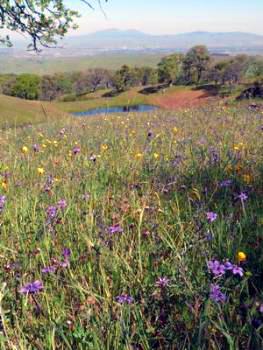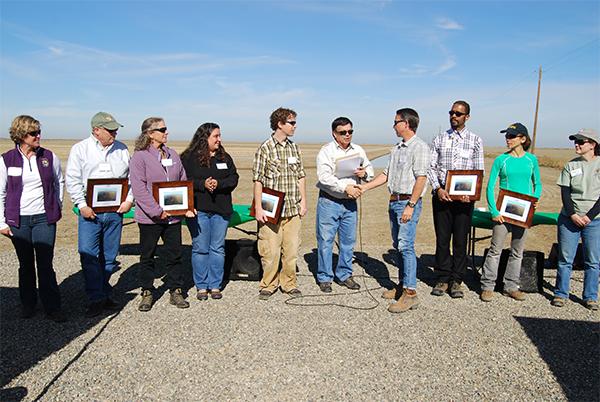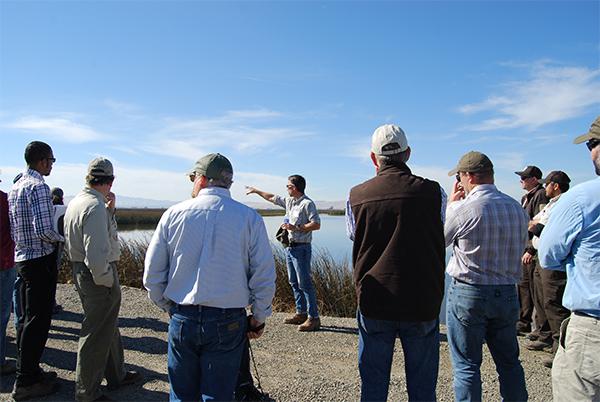|
|
WES would like to take this opportunity to thank all of our partners for a fantastic year. 2015 has seen the approval of two new banks, Locust Fork Mitigation Bank in Alabama and Grasslands Mitigation Bank in California. Restoration construction on several projects was also completed at Canoe Creek Mitigation Bank, Colusa Basin Mitigation Bank, and Grasslands Mitigation Bank. These projects would not be possible without the hard work of our partners in both the public and private sectors. In 2016 we will celebrate our 10-year anniversary. We are proud of what we have accomplished since 2006; over 5,000 acres of wetland and endangered species habitat on over 15,000 acres of preserved habitat nationwide, and we are excited about all we can accomplish together in the coming year.
From all of us at WES, have a safe and happy holiday season and a joyous new year!
|
|
WES Now Offers Credits from Fletcher Conservation Lands
|
 WES has partnered with Fletcher Conservation Lands to offer credits from Mountain House Conservation Bank, Ohlone Preserve Conservation Bank, and Ohlone West Conservation Bank, located in Alameda County. The banks offer an array of credits, including Burrowing Owl, California Tiger Salamander, San Joaquin Kit Fox, California Red-Legged Frog, Vernal Pool Fairy Shrimp, Swainson's Hawk, Alameda Whipsnake, and Callippe Silverspot Butterfly.
For more information about the banks and available credits contact
Travis Hemmen.
|
| Florida Imperiled Species Management Plan Could Encourage More Private Mitigation for State-listed Species |
 |

On November 19, 2015, the Florida Fish and Wildlife Conservation Commission (FWC) presented the draft
Florida Imperiled Species Management Plan. The plan provides strategies for addressing multiple fish and wildlife species in shared habitats and the specific needs of 57 imperiled species. The plan is a culmination of nearly five years of drafts and more than 500 public comments. The FWC is once again requesting comments for the next 60 days on the current draft of the plan.
The plan includes a law and policy chapter with language encouraging the use of mitigation to offset state-threatened species. The chapter reviews the regulatory approaches which allow FWC to require measures to avoid, minimize, or mitigate impacts to fish and wildlife resources. The chapter also includes a discussion of mitigation options for meeting rule requirements. The plan identifies habitat protection as a mitigation option and using an evaluation methodology such as the Florida's Uniform Mitigation Assessment Method.
|
 |
|
Into The Sunset - Mariner Conservation Bank Sells Last Credit
|
 |
WES has sold out of credits at Mariner Conservation Bank in Placer County. Approved in 2007, the 160-acre bank provided vernal pool preservation credits to offset impacts to vernal pool habitat and foraging habitat credits for Swainson's hawk. Now that the bank is officially closed, what happens next?
When establishing a mitigation or conservation bank, several assurances and securities are put in place to protect the habitat long after the last credits are sold. These protections include the Bank Enabling Instrument (BEI), Conservation Easement (CE) and non-wasting endowment. The Long-term Management Plan (LTMP) section of the BEI outlines the monitoring and management of the property in perpetuity. The Conservation Easement, held by Placer Land Trust, safeguards the preservation of the current habitat value of the site by verifying the compliance by WES of the CE and LTMP. In addition, the endowment, managed by the Center for Natural Lands Management, ensures the money needed to maintain the property will always be available.
With the bank transitioned into the long-term management phase, WES will continue to monitor the bank on an annual basis for both qualitative and quantitative factors. Vernal pool invertebrate surveys will take place every five years.
|
 |
|
Grasslands Mitigation Bank Celebration Honors Conservation Partners
|
 |
WES would like to thank everyone who attended the
Grasslands Mitigation Bank
(GMB) open house celebration on November 5th. The restoration of the 281-acre site would not be possible if it weren't for our partners: the Department of Water Resources, U.S. Fish and Wildlife Service, California Department of Fish and Wildlife, U.S. Army Corps of Engineers, the U.S. Environmental Protection Agency, Wetlands America Trust, the National Fish and Wildlife Foundation, and the Grasslands Water District.
 The project has restored an agricultural field back to dendritic depressional seasonal wetlands, typical of the extensive ponded habitat historic to the Grasslands region in the Central Valley. In addition, the project created a mosaic of perennial wetlands and upland estivation habitat to support the full life cycle requirements of the Giant Garter Snake (GGS).
Historically the GGS range stretched from Butte County in the north and southward to Buena Vista Lake in Kern County. This species inhabits wetlands within the Central Valley of California but due to habitat loss, fragmentation of wetland habitats, declining populations, and continuing threats to the remaining populations, the GGS was listed by the state of California as a threatened species in 1971, and as a federally threatened species on October 20, 1993.
GMB is ideally positioned adjacent to areas managed for wildlife habitat, including the Volta Wildlife Area, which currently supports a sustaining population of GGS and provides functional habitat value and connectivity between GMB and the nearby lands. GMB will be protected in perpetuity by a conservation easement, overseen by Wetlands America Trust, a Ducks Unlimited affiliate, and funded by a non-wasting endowment, held by the National Fish and Wildlife Foundation. The site will be managed to provide year-round habitat for GGS and many other wetland-dependent species.
GMB is the only project in the area offering advanced mitigatio
 n to offset impacts to the GGS and seasonal wetlands regulated under the Clean Water Act. Advanced mitigation ensures sustainable GGS habitat is functional in advance of project impacts. It provides a larger ecological benefit to the species by consolidating the numerous small, isolated or fragmented mitigation projects into a single, strategically located large parcel.
The service area includes portions of San Joaquin, Merced, Kings, Kern Fresno, Madera, Contra Costa, Alameda, Tulare and Stanislaus counties.
|
 |
|
Marshall Cook Joins the WES Team
|
 |
WES would like to welcome Marshall Cook to our team! Marshall joins WES as the Senior Business Acquisition Manager for the Western Regional Office. In his position, Marshall will assist both public and private clients with their mitigation obligations and also work to acquire new projects for WES.
Prior to joining WES, Marshall served as Transaction Director for the California Rangeland Trust. Marshall earned an undergraduate degree in marketing from Westminster College in Salt Lake City, Utah, and a law degree from the McGeorge School of Law at the University of the Pacific in Sacramento, California. Prior to beginning his secondary education, Marshall served in the United States Army, 3rd Infantry Regiment, "The Old Guard," in Fort Meyer, Arlington, Virginia.
Marshall lives in Sacramento with his wife and two young sons and is an avid outdoorsman, whose hobbies include hunting deer, pigs, turkey, ducks, dove and pheasants, as well as fishing, hiking and finding edible wild mushrooms.
|
 |
|
A few minutes of your time could earn you a brand new YETI cooler!
WES respectfully requests your participation in a customer survey to evaluate how well we are serving your business needs. The results of the survey are completely confidential and will not be shared, published or used in any external commercial manner. The survey is designed to take no more than 10 minutes to complete.
Click
here to take the survey.
All completed surveys will be entered in a drawing for a YETI Tundra 45 Cooler in Tan!
In order to be eligible to win you must submit your completed survey by January 29, 2016. We will announce the winner by email on February 5, 2016.
|
 |
WES is pleased to sponsor a "Time for Conservation" segment during the 2016 season of Fly Rod Chronicles on the Outdoor Channel. Each segment will discuss an important conservation issue related to the episode's location, while educating viewers on the preservation of our natural resources. Be sure to tune in on Saturdays at 5:30 PM or Sundays at 7:00 AM to catch a segment.
To learn more about the show visit the Fly Rod Chronicles website. |
|
|
|
 |
 |
|
|